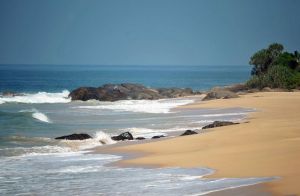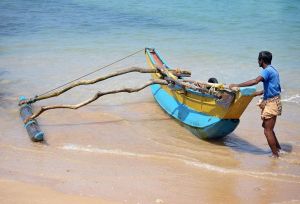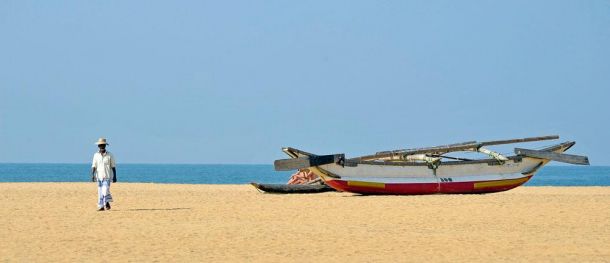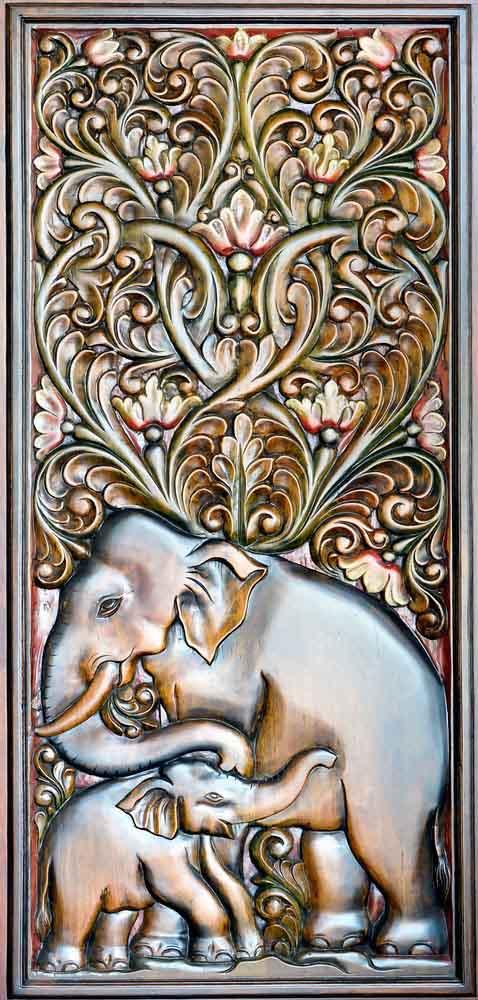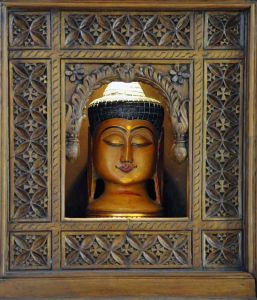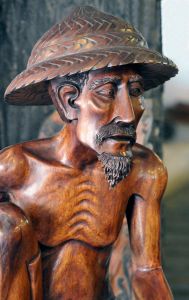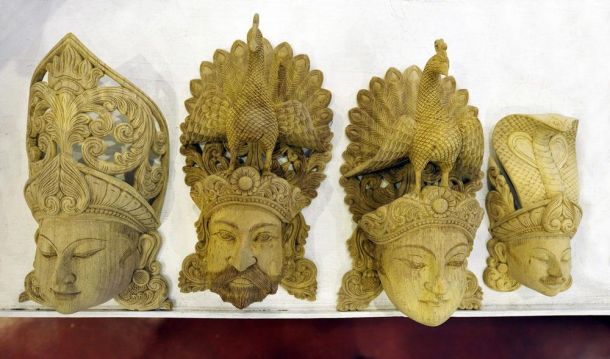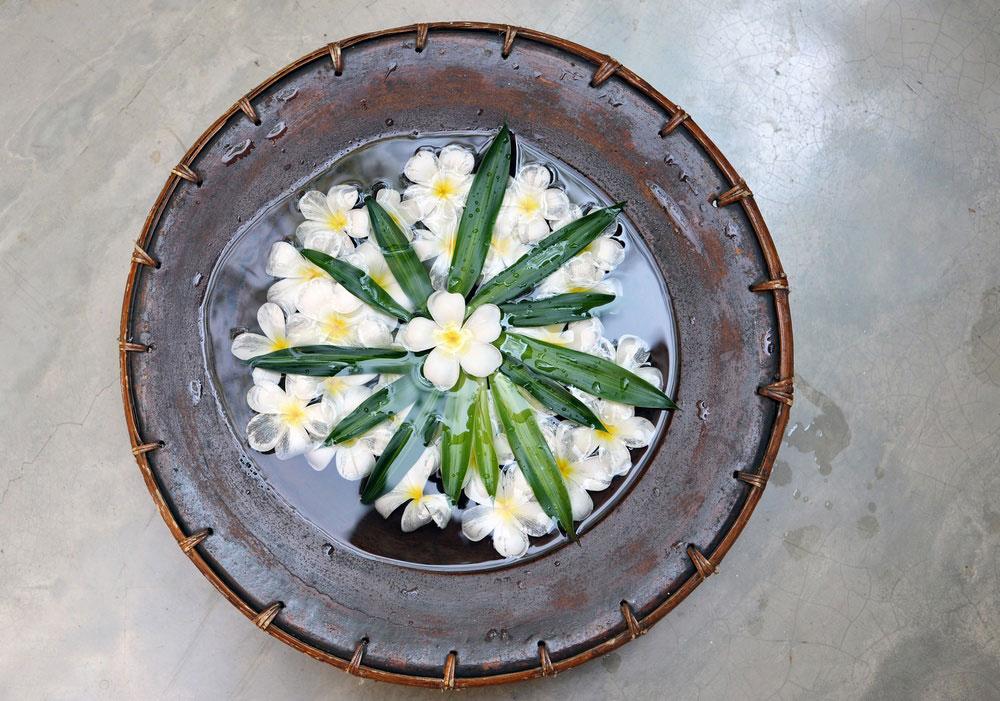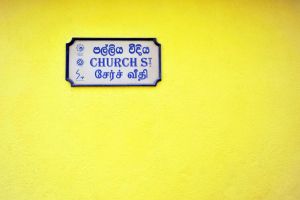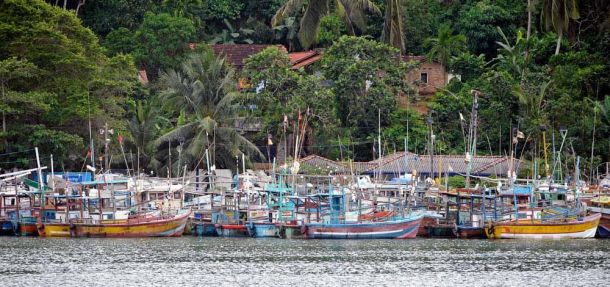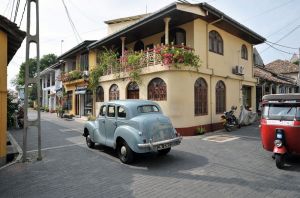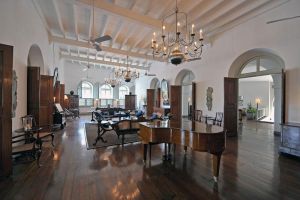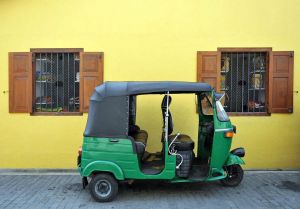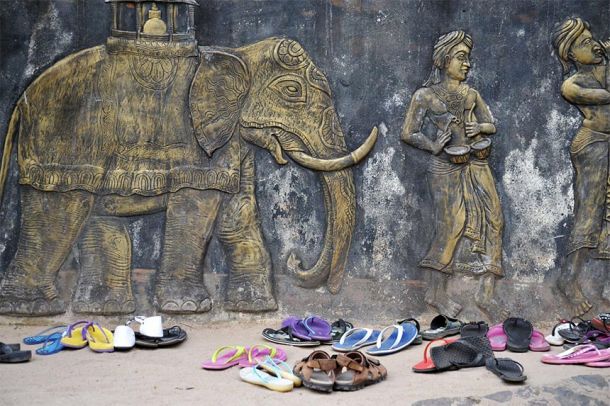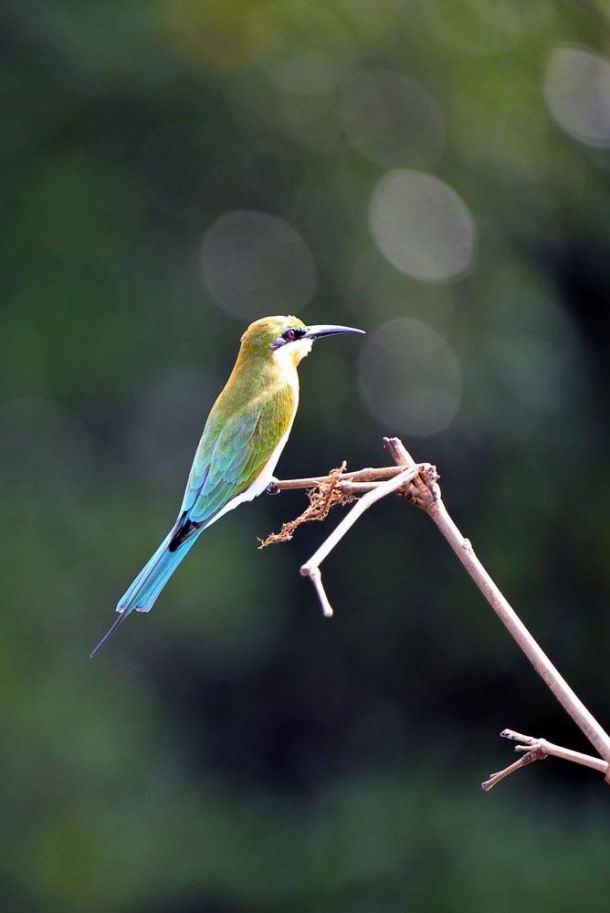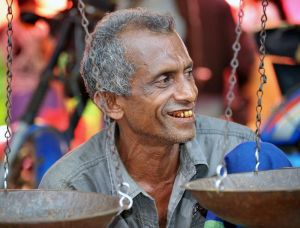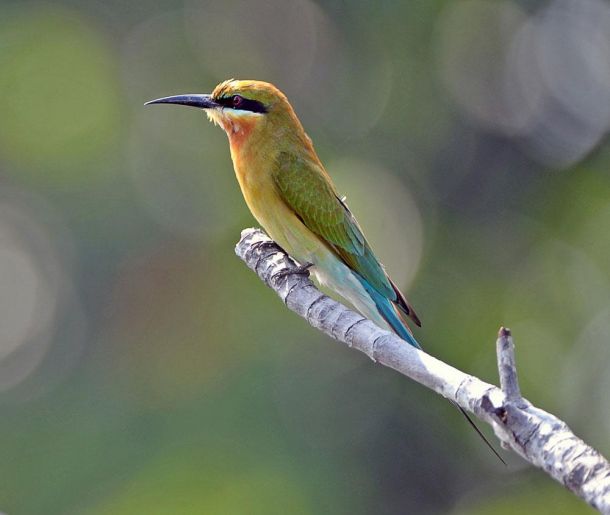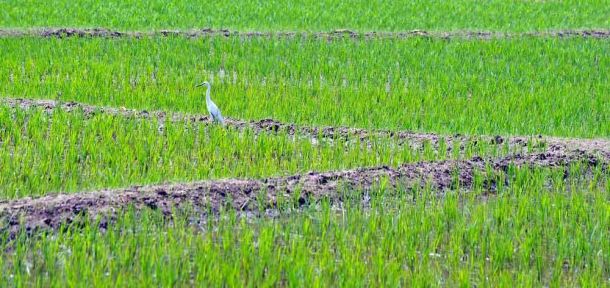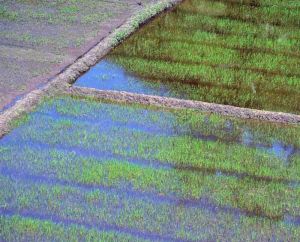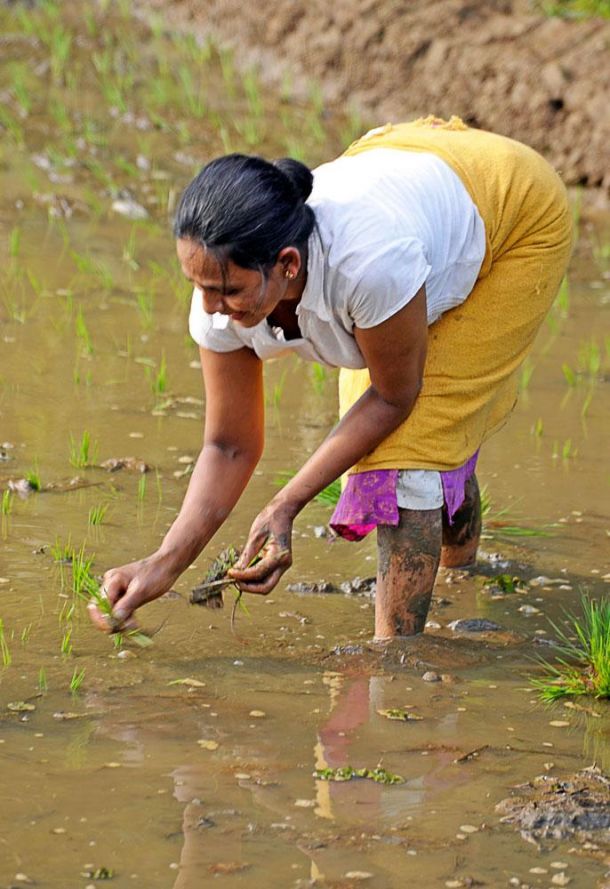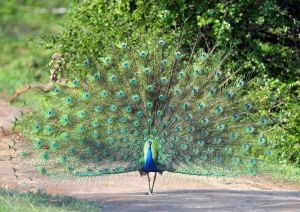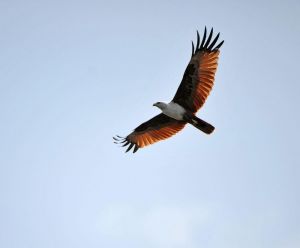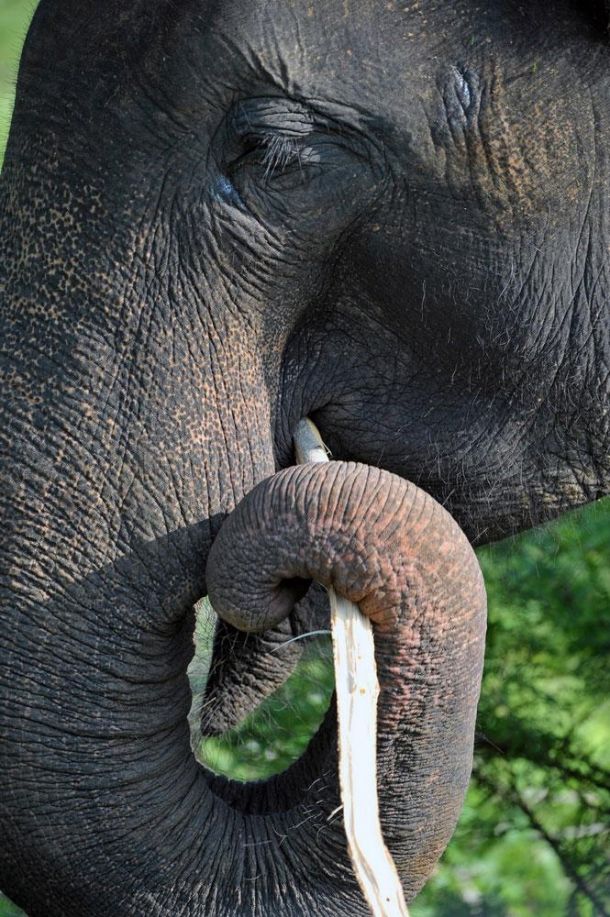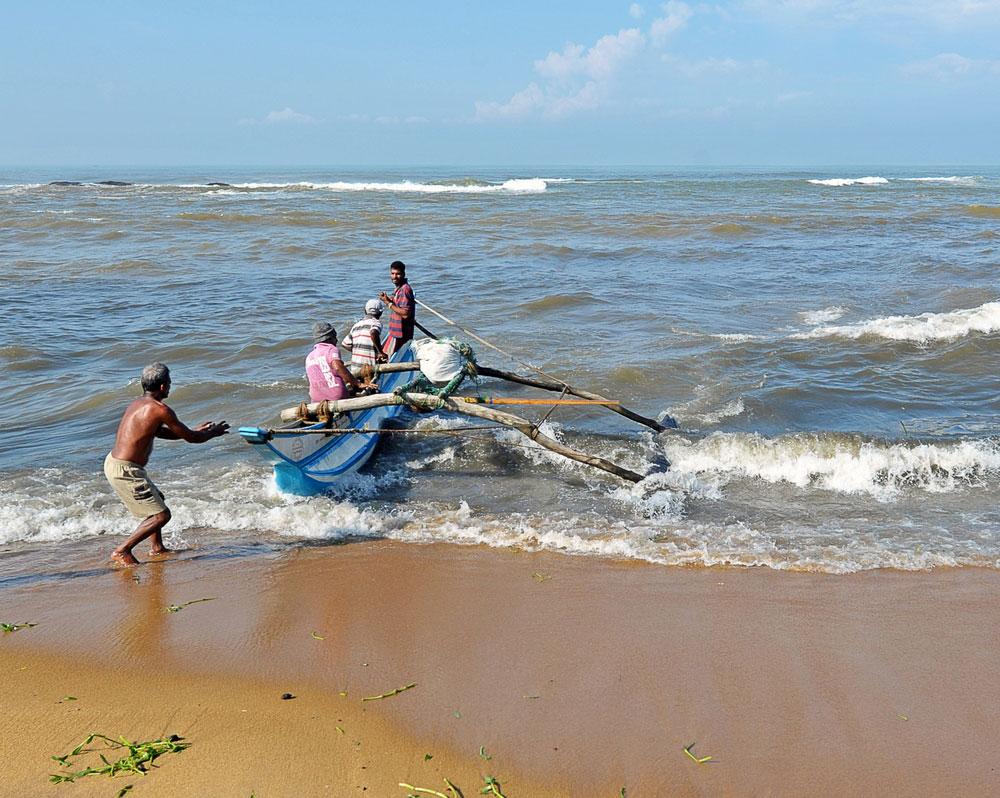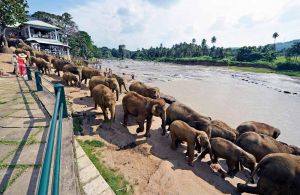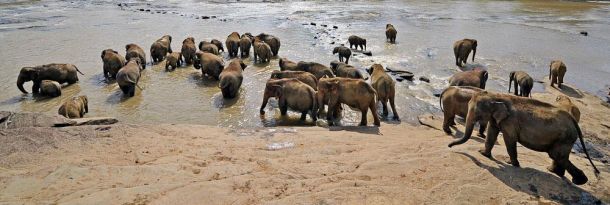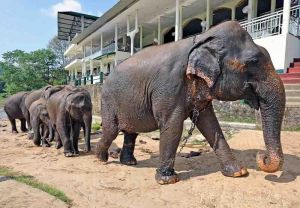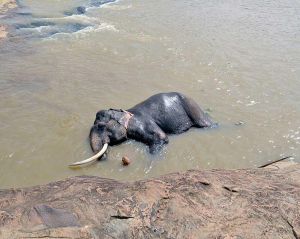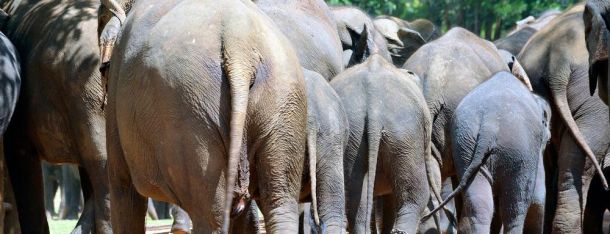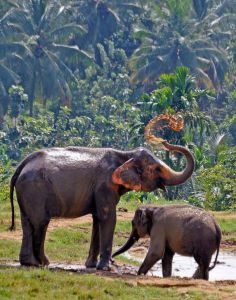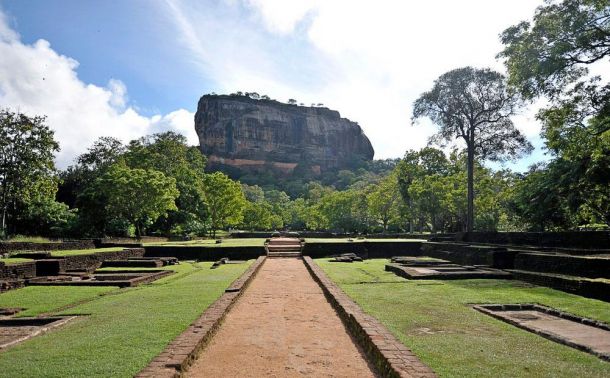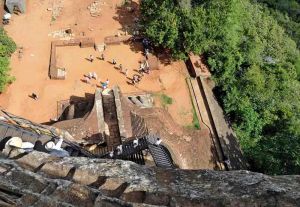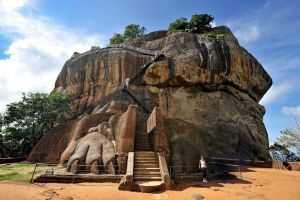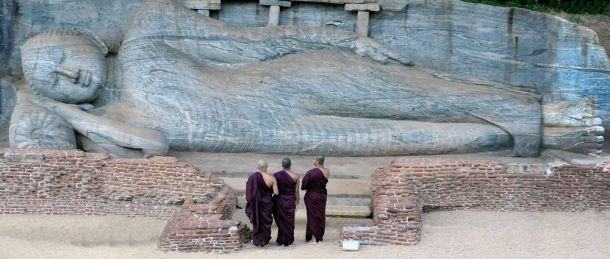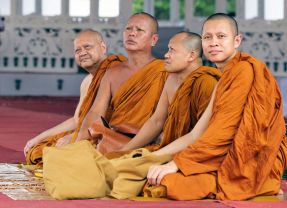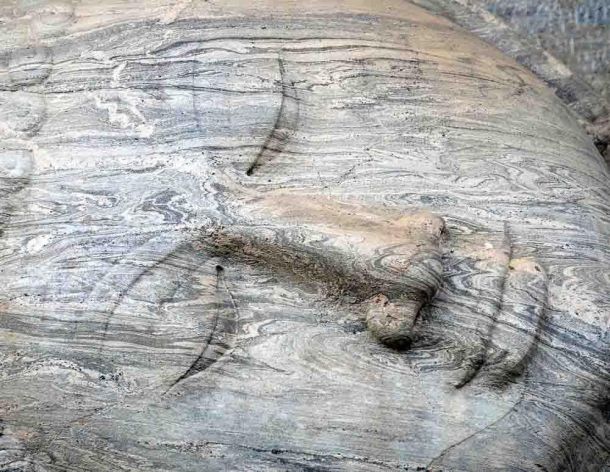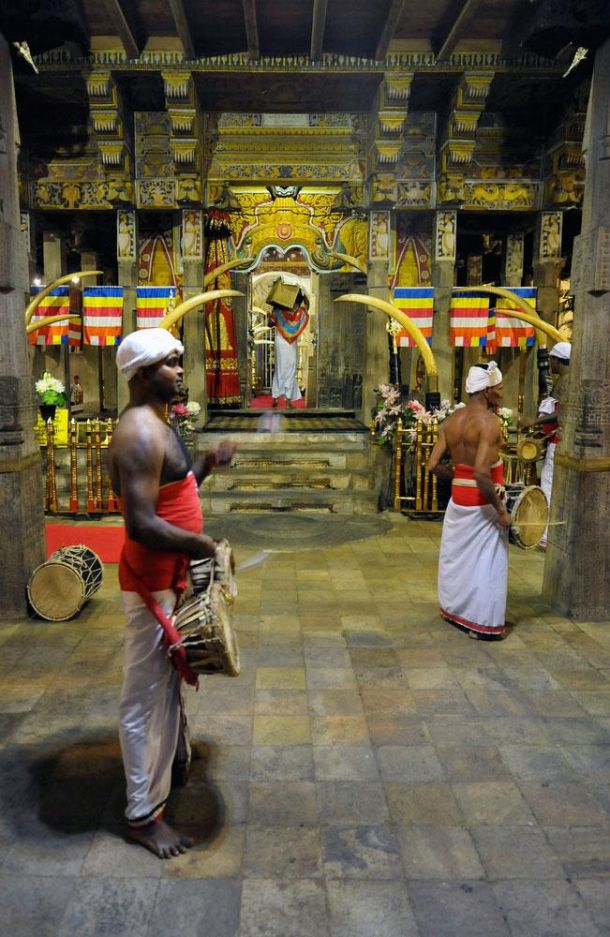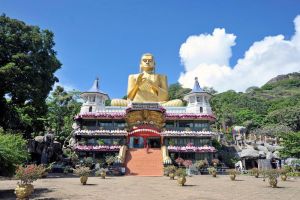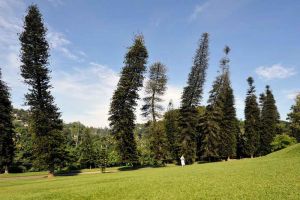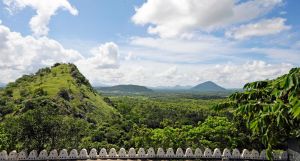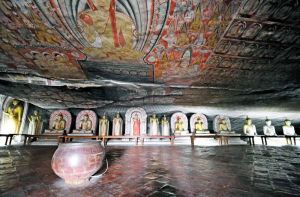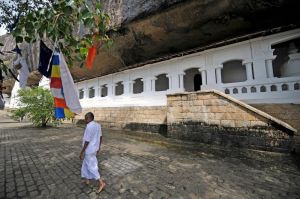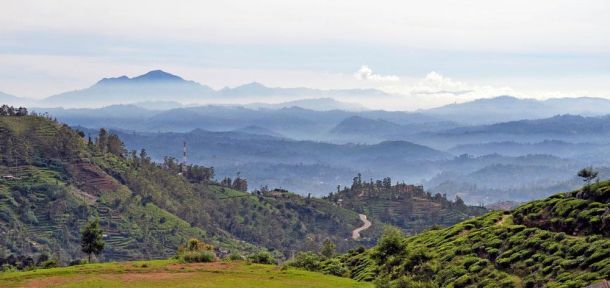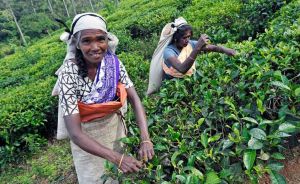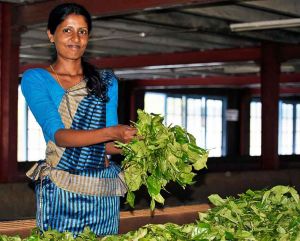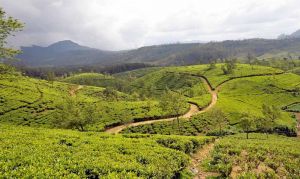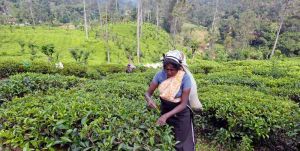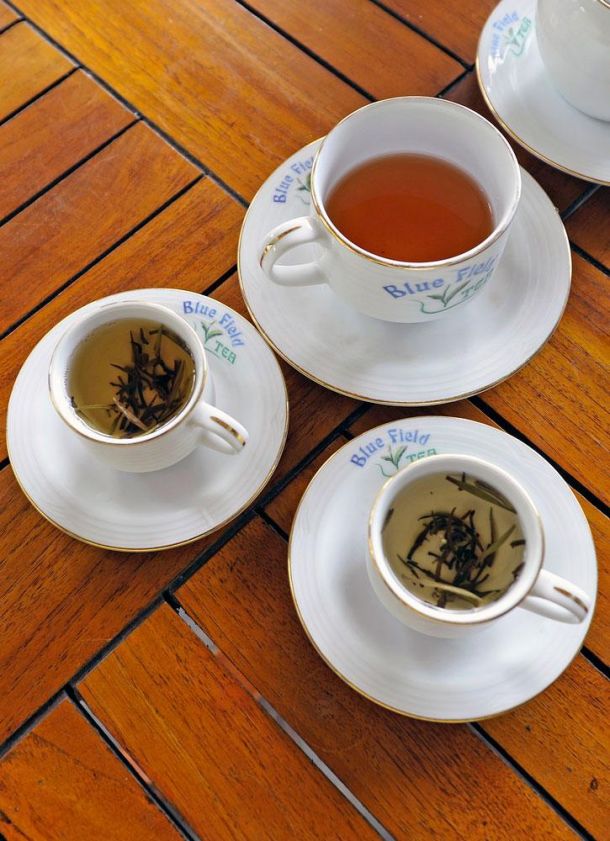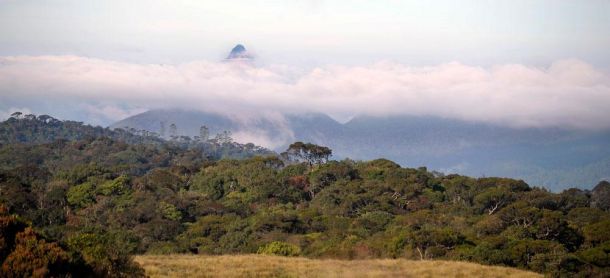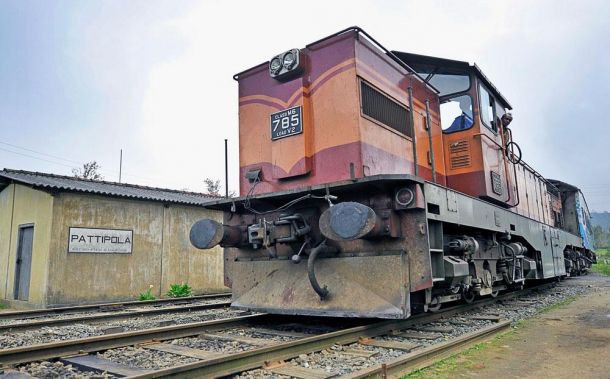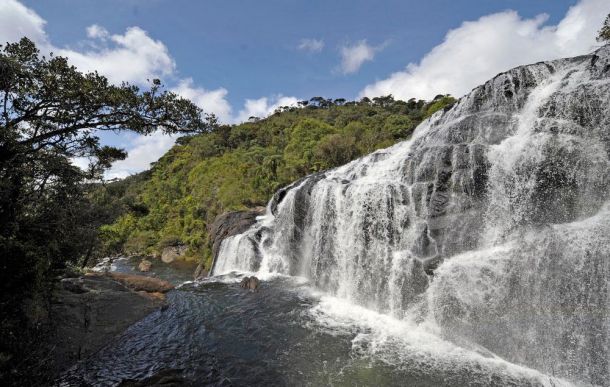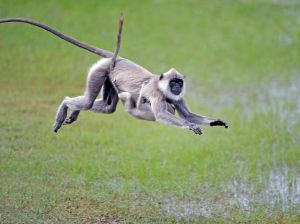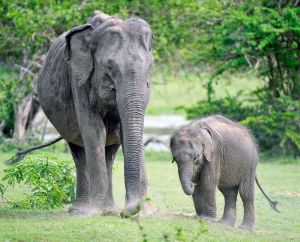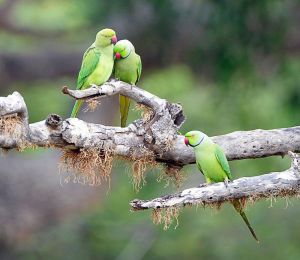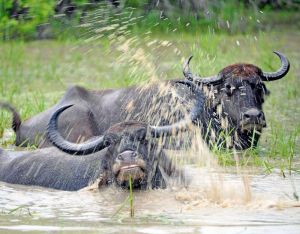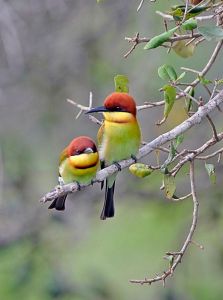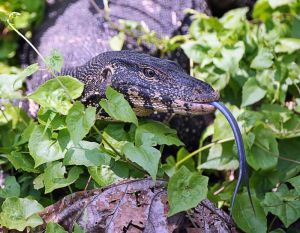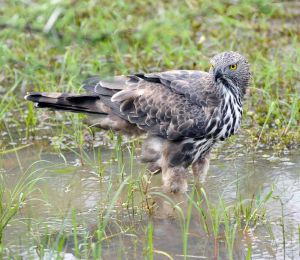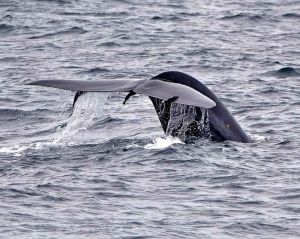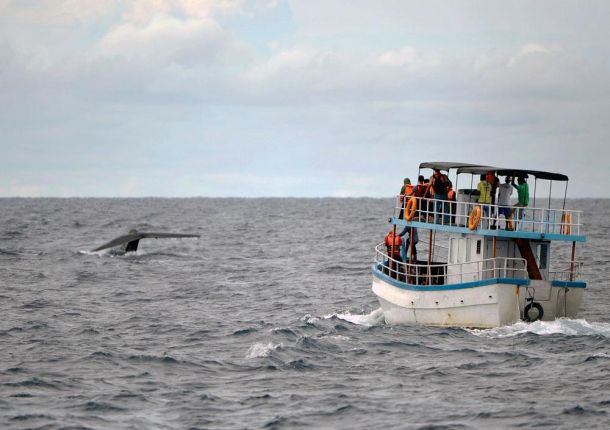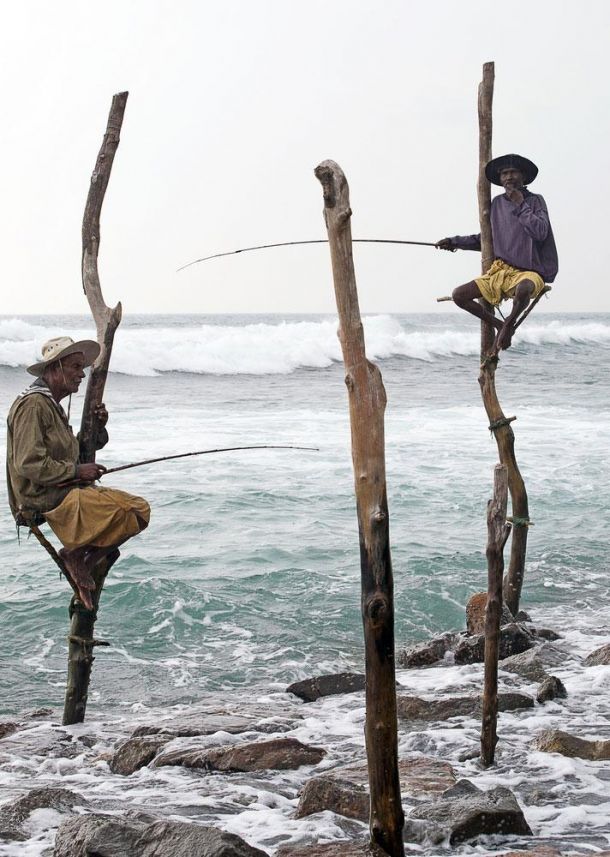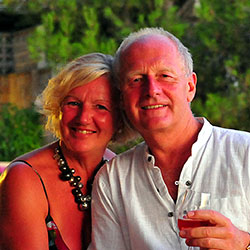You might ask why you should go to Sri Lanka if you’ve already been to India…or even if you haven’t – well in our opinion it’s all the best bits of India condensed into a smaller space!
Whilst the turmoil of civil war and tsunami inevitably have obviously left their marks, the Sri Lankan people and government are determined to put it behind them and fully embrace the notion of luxury hospitality as a means to realise their full potential.
Sri Lanka offers First class hotels and Lodges that encapsulate the best of Sri Lankan culture whilst providing all you might expect of any superior hotel anywhere in the world. Even though you might dine and retire within opulence you’re only ever a few paces away from the true spirit of Sri Lanka and its people.
Sri Lanka’s history spans over three thousand years so it’s easy to imagine the diversity of religions and ethnic groups that are represented here. From Aboriginals to Tamils and Sinhalese through Buddhist, Hindu and Christians; pursuing trade in gems, rubber, cinnamon, tea, coffee and coconuts since the days of the Silk Route, through to occupation for geographic and strategic reasons by the Dutch and latterly the British up until Independence and the change of name from Ceylon.
Our travels initially have covered much of the southern and central areas of Sri Lanka, as much of the north and northeast has been inaccessible. Our review of the northeast will be added as we explore these areas later in 2015.
In the meantime there’s plenty to keep you fascinated in the readily accessible areas as a strong infrastructure with luxury accommodation exists to make your stay a pleasure.
Our journey starts by arrival in Colombo and immediate transfer along the almost empty V.I.P. Highway to Cinnamon Bey Bernwala Hotel.
Cherrie: To the jaded traveller Cinnamon Bey is at first a tribute to reinforced concrete but the rooms are spacious and well-presented and the setting sun transforms the hotel into a delightful scene where candlelit al fresco dining and a feast of fresh fish soon dispels the rigours of long haul travel.
There are a number of beautiful hotels that entice the discerning traveller all along the south-western coastline and you’ll be hard pressed to choose between them. It’s more a choice made on the décor and ambience you prefer than the service and facilities they offer and we suggest a handful here before we start our travels.
Michelle Beach, Balapitiya, Bentota. Again you might be forgiven for thinking you’ve arrived at a Government Institution on first glance of the stark white clinical walls and austere design adjacent to the main road but as you walk into the cool, quiet air-conditioned lobby, the panoramic vista of Bentota beach captivates and draws you to it from the outset and the rest is forgotten as you book into one of the sixteen stylish minimalist rooms with Jacuzzi, split level accommodation, infinity pool, living area or plunge pools depending on whether you’re booking Deluxe, Super Deluxe, Rose Petal or Suite accommodation.
All along this attractive coastline, hotels and palm trees vie for beach space whilst the ribbon coastal road from which narrow tracks lead to discoveries of hidden hotel gems accommodates the local trades of wooden furniture, craft and ceremonial mask making.
The Chaaya Tranz Hotel, another in the Cinnamon chain is by comparison a more Bohemian, albeit large affair with local art murals over the walls leading to any one of the one hundred and fifty rooms. The size generates corresponding swimming pool and catering facilities and is well presented if you like larger places to sun yourself and dine. The beach, which is also open to the public is as likely to reveal a basking turtle as it is a local outrigger boatman seeking your Rupees. The local area is renowned as a backpacker’s paradise and although private and beautifully situated, the hotel feels more commercial than exclusive with a reputation for being ‘trendy’.
Cherrie: The Aditya, Galle, however is a little minimalist haven; a stylish boutique hotel that imparts the feeling that you are an individual and will be treated as such. Each of the finishing touches, whether they be the magnolia flowers floating in a tranquil bowl in reception or the large rooms with plunge pool and king-size beds make you feel that you’ve come to a personal spa rather than a hotel – and the ‘anytime, anywhere’ policy for the restaurant that caters for the twelve rooms reinforces this impression. Definitely just chill here in the peace and quiet as a monitor lizard ambles across the lawn under the hammock, on its way to the Aditya’s private beach – just heaven.
The Fortress at Koggala (about 20km outside Galle and 2km from Koggala airstrip) by contrast, thrusts you into imposing ‘colonial’ architecture and this self-styled ‘boutique resort’ certainly offers all you might want in a larger hotel in terms of its fifty or so individually styled rooms with large comfortable super king beds and either balconies or courtyards that face the garden or sea. The hotel is styled on the original Galle Fort with its Dutch, Portuguese and Sri Lankan influences that echo the days of old Ceylon but don’t lose sight of today’s demands for music and IT facilities! Any stay here will prove rewarding; not least because of its imposing position on the shore and interesting architecture but also because of the willingness of the staff to help make this a much more personalised and pleasant stopover than you would at first imagine from such a sizeable hotel.
Cherrie: Hotel Frangipani at Thalpe is a more fragrant, delicate, alternative and gave us the impression of being slightly hippy but stylish as part of a small group of Edwards hotels – it’s a tad more basic than opulent but with its own refreshing take on ‘boutique’. Although on the seafront it doesn’t have direct beach access and the nearest is about one kilometre away. It does compensate however with a rather pleasant swimming pool which is the focal centre of the hotel, around which the handful of open airy rooms is situated. Stylish and simple we felt that we’d be well looked after and couldn’t fail to get to know fellow guests.
A trip around the south of Sri Lanka wouldn’t be complete without a visit to Galle Fort area. It’s a time-capsule of Portuguese, Dutch and English colonial architecture, pretty and interesting narrow streets dotted with restaurants, hotels and shops but overall an area that whilst capitalising on its heritage still remains unselfconscious as a functional town.
Cherrie: While in the Fort, we stopped off at the ‘New Oriental Hotel’ as colonials would have known it – now the Amangalla Hotel – which epitomises colonial style and grandeur. It’s a very traditional, antique blessed edifice of thirty rooms of varying character and location around this majestic property. The grand piano, courteous staff and chicken garlic curry lunch also impressed us! If we’d had more time we’d have definitely stayed here in order to spend longer exploring Galle Fort and also to sample more of the hotel’s hospitality.
If staying in Galle Fort you might also like to consider The Fort Printers private hotel. It’s an 18th century mansion situated in the middle of the network of narrow streets and restored into an elegant small private hotel. Originally comprising 5 suites, with the addition of two heritage villas in 2013 it now has 13 suites, offering ‘understated elegance and personal service in an intimate, friendly atmosphere’. This is where personal taste comes to bear as although quirky, stylish and elegant with plenty of antiques and other touches that enhance the overall ambience that supposedly attracts the ‘design-savvy’ cognoscenti from around the island, we felt it a little Spartan and basic but it undoubtedly reflects colonial character – perhaps without all of the trappings of a deeper overall comfort.
We travelled on around the coast and dropped into one of the turtle hatcheries to see the work they are doing to repatriate young turtles that would otherwise fall prey to either other wildlife or Man’s intrusive activities. Whilst the hatchery caters for and pampers to tourists it nevertheless does valuable work and the opportunity to see the various stages of a young turtle’s life before release is fascinating.
It was a Buddhist ‘Full Moon Day’ whilst we were in this part of Sri Lanka and we couldn’t help but become wrapped up in the celebrations of the white-clad worshippers as they made their way to the various shrines. It puzzled us to see a mix of Buddhist Stupa and Hindu shrines with their Gods intermixed within the same location until we reflected on the phenomenal growth of Hinduism over the centuries, largely effected by the recruiting and absorption of other faiths and Gods into their own doctrines. Is Buddhism, with its virtually unique lack of a central deity next?
Not far from here, perched on a rocky outcrop of rock on the southern side of Bentota is Saman Villas, which overlook the Indian Ocean and enjoy a quite unique location. It can be reached in 45 minutes by helicopter from the International airport or 90 minutes from Colombo via expressway.
Cherrie: What at first looked as if it would be unsurpassed as a location and hotel was somewhat disappointing. The driveway doesn’t promise and the dark central interior area doesn’t dispel the feeling that the whole place needs a little tlc and refurbishment. Undoubtedly set within an idyllic location, Saman Villas looks as though it’s traded on this for too long and would benefit from a team of dedicated management to revitalise its vitality, character and presentation. A shame as it promised much.
The boat trip we took along the broad and muddy Bentota River also failed to deliver on its promises but the boatman’s enthusiasm and energy dispelled any thought that we were being ‘taken for a ride’ in his jaded fibreglass Alton Towers reject. We spent two hours for a modest £25 floating along the banks of the seemingly lifeless river and other than the ubiquitous Monitor Lizards, Kingfishers and Herons the river delivered less than the waterfront restaurant where we indulged in grilled shark; whilst avoiding the adjacent gem sales-booths in favour of a later walk through the local vegetable and fish market accompanied by the usual smells and yells we’re more accustomed to in India.
Cherrie: If we had to plump for a basic standard of reliable luxury hotel with distinctive design and a degree of local individuality then we’d probably go for the Taj Group. Taj isn’t always what you’d call ‘boutique’ but it is stylish and generally in harmony with its location. Vivanta at Taj, just along the coast at Bentota beach is such a place. If you like soaring atria and wide open spaces with minimalist design but with quiet attentive service and quality furnishings set in beautifully groomed surroundings then Vivanta at Taj is for you. If you prefer the seclusion of unassuming spaces then perhaps not. We haven’t ever been to a Taj that is like one of its sisters so it’s always a pleasant surprise to find what treatment has been given to the unique buildings they design; the reception and service however is a constant and one that many could do well to emulate.
The Royal Palms and Reef Hotels are examples of two locations that straddle either end of the size scale but demonstrate perhaps a corresponding increase in more personal luxury. Royal Palms greets you with an attractive white marble and gold bedecked entrance presided over by a huge white elephant but rapidly transforms itself into a tropical paradise of grass roofed villas and general areas that although imposing are sufficiently well planned in their distribution for you not to feel swamped by buildings or people from their one hundred and twenty nine rooms.
The Reef Hotel is much more our style, especially when we want a romantic time away from ‘friendly’ people and want time to ourselves to just enjoy what to all intents and purposes could be a friend’s private home. It’s beautifully secluded, down a narrow track and neither clearly signposted nor easy to navigate by car and reached across a narrow walkway to the instantly welcoming reception pavilion. The dozen rooms are all beautifully appointed in their own pavilions within the three acres of tropical gardens. Designed, decorated, furnished and owned by a British antiques dealer, the Reef exudes warmth and charm – a real place for lovers and possibly our favourite in Sri Lanka. Don’t be put off by their pedestrian website; it’s in direct contrast with the place.
If it wasn’t for the Reef, you couldn’t fault Serene Pavilions at Wadduwa. Having had the great good fortune to travel to and stay in many luxury locations throughout the world we’ve gradually honed our opinions and preferences to distil them into ‘feelings’ rather than facts that distinguish hotels from one another. Serene Pavilions has everything; the crisp white spacious areas, the designer furniture and individual pavilions for rooms with attentive courteous staff – but it all feels just that little bit clinical and ‘manufactured’ rather than being something that flows from the heart, with an innate desire to please and invite. Obviously, the larger the hotel the more difficult this is to achieve and perhaps that’s why we favour smaller establishments for that personal warmth; unless on occasion we opt for the greater anonymity but reliable standards afforded as part of larger guest numbers.
Enough of hotels for the moment and off on our travels up-country.
We’d hired a private car and driver through a ground agent to take us around the country, as it afforded us independence but without the hassle of navigating and driving ourselves. Also, as I enjoy photography, opportunities are often lost if I’m concentrating on avoiding people, animals and obstacles on unfamiliar roads. Our first destination was to be the Sri Lankan rainforest. As avid wildlife enthusiasts we realised that with a dearth of luxury hotels we were going to have to compromise if we wished to visit the area.
If you go to the Rainforest Edge at Kalawana and leave all expectations behind then you’ll have a wonderful time. If you go expecting warmth, comfort and unbridled pampering, then best to watch a video of it at home. To reach it you’ll drive for some hours, always climbing on ever narrowing roads through tea and rubber plantations and without any really pleasant watering holes en route until the road seems to run out with nothing but a couple of rubble tracks on either side.
Cherrie: It’s difficult to be too critical of Rainforest Edge as the staff couldn’t be more helpful but the all-pervading damp occasioned by its rainforest location inevitably means that compromises have to be made in terms of furnishings and luxuries that would spoil in the sodden climate. Access from the main ‘highway’ is by Tut-tut up a broken bone rattling track (no matter what luxury you’ve travelled in to reach the base of the track) and the location is stunning with views that come and go with the drifting clouds. If you’re intrepid enough to weather the weather and the basic accommodation and somewhat lurid colour schemes in the rooms, then you’ll enjoy yourself, especially when you venture into the rainforest itself.
Treks can be organised with experienced government guides on fairly well-trodden paths where you’ll see a plethora of brightly coloured birds – but beware that you will inevitably become leech food. They’re harmless but do make a mess when replete, so it’s better to prevent the little suckers by wearing wellies, or gaiters around your ankles and long sleeve shirts.
You might wonder why on earth you’d venture into the Sinharaja rainforest and Rainforest Edge but it will be an experience and if nothing else will certainly make you appreciate the comfort of your future accommodation.
Cherrie: Our next visit was to Udawalawe National Park and we stayed close by at the Grand Udawalawe. It’s grander by name than nature, with fairly expansive proportions without being plush. As with many places outside the main cities of Sri Lanka, space has not always been filled thoughtfully and large edifices can leave the impression that they’re yet to be finished. That said, the Grand does offer comfortable convenient accommodation for the nearby park and facilities are more than adequate and the staff attentive. We imagine that the size of the place is designed for catering for larger parties and groups who might be less concerned about the niceties of finer comfort.
We hired a driver and jeep for park access, ensuring that we had a jeep with a removable roll-back canvas roof so that I could take photos more easily. We found that the drivers are often more empathetic and knowledgeable than the park guides, so you might consider not bothering with the official guide at all unless you particularly want to support the local economy.
As with India, requests sometimes get lost in translation; so our omelettes for breakfast arrived as fried eggs – or ‘bull eyes’ and the raitha (yoghurt) we requested for our spicy main course arrived instead with honey for dessert – simple errors but be prepared to be patient as they’re indicative of an innate willingness to please without necessarily a full comprehension. The honey, incidentally, was made out of flower sap rather than from bees, which straight from the tree is akin to champagne and it’s also available as a kind of jaggery in solidified form like hard fudge.
Cherrie: As travel by car is probably the most convenient way of moving around the country you need to be aware that one hundred kilometres can take you up to three hours, simply because of volumes of traffic, so factor this into your journeys. Be prepared for the novel practice of cars trying to overtake three-abreast in opposite directions – but someone presumably always gives way as we didn’t see any wreckage by the roadsides!
We headed back to Negombo Beach in the south in order to catch up with some friends who were flying in to meet us and to travel around with us for a couple of weeks. On the way we stopped off for ‘high tea’ at The Kingsbury – a beautifully refurbished ’corporate style’ five star hotel; the first ever in Sri Lanka. We met and stayed for the first night at Negombo Beach, also known as Jetwing Beach Hotel which, as the name suggests, is situated right on the beachfront with acres of pristine beach stretching in a broad swathe to the ocean.
Although fairly modern the Negombo beach presents stylish white painted rooms with vast bathrooms that with large glass partition walls are almost separate rooms in themselves, balconies that enable you to watch the sun go down or overlook people meandering amidst the palms or sitting in their sunchairs in the pool with a glass in hand.
Food preparation is exceptionally good here and it’s not necessary to venture out onto the ‘strip’ unless you particularly want an evening stroll; where you’ll become immersed in the general hub-bub of local and tourist life and can find small restaurants and bars in a seemingly never-ending row on either side of the road. We did find a quirky ‘Swiss’ restaurant and enjoyed a plentiful platter of mixed fresh fish and lobster, which with ample wine worked out at a very reasonable £15 per head!
After a leisurely and substantial breakfast from the buffet next day we met Uppal, our driver for the forthcoming journey. Incidentally, it’s not something you always think about but it’s well worth stocking up with plentiful supplies of bottled water for any journey when you can, as it’s not always readily available en route or when you want it and journeys can be long and dry without.
We set off for Habarana, which lies at the centre of a number of significant religious sites. The road is narrow and winding, passing through verdant groves of pineapple, bamboo, coconut and rubber plantations as well as cashew, jackfruit and cocoa interspersed with patchwork paddy fields of lush green rice shoots.
On the way we stopped off at Pinnawala elephant sanctuary. Originally established on the pretext of rescuing elephants that had been displaced, injured or orphaned in the civil conflict within Sri Lanka, the present day motives of the place are more questionable. It’s undoubtedly interesting and a very popular tourist attraction, especially when the elephants walk in procession through the village and down to the river to bathe but with our own leanings towards conservation, Pinnawala should now come under more scrutiny than perhaps it does. For those interested in forming their own opinion before visiting please refer to the hyperlink below that refers you to the Born Free Foundation’s position on it. We now recommend the Elephant Transit Home (ETH) near Udawalawe as this is run on much more humane grounds – see the link below in Cherrie’s Notes.
Cherrie: The Cinnamon Lodge, where we now arrived at Habarana is a sizeable oasis of both calm and activity revolving around its luscious twenty seven acre site that’s laced with pools and populated by over a thousand trees. Whilst the central areas are grand and busy, each of the rooms is situated within smaller lodges arranged around the site. This picturesque setting is a haven for birdlife and although you’ll probably use Cinnamon Lodge as a base for visiting Anuradhapura, Polonnaruwa and Kandy, it’s well worth spending a bit more time at the hotel to fully appreciate what it has to offer.
We have to confess that having lived in India for seven years we’re rather ‘templed out’ and with so many religions, festivals, shrines, temples, churches, religious artefacts and statues that we’ve sadly become rather jaded by the whole process of endless traipsing around locations that mean the world to individuals but not so much to us. That said, we’d recommend that you read up a bit on the places around Habarana and then select a couple to give you a good insight into the architecture and faith that is represented within the area. They are undoubtedly significant and rewarding visually, if not spiritually but you’ll will definitely exhaust yourself if you attempt to cover all of them over a couple of days – we did and finally called a halt by the afternoon of the second day!
The first visit was to Sigariya Rock and this is good even if all you want is a good session of cardio workout as it takes the best part of forty minutes to walk up steep, narrow, precarious and dramatic stairs, steps, spirals and stone shelves to get to the very top. The trip is not for the faint hearted, weak kneed or those without a head for heights but the views from the top are exceptional. King Kasyapa thought so when he built his new palace on the top of this rock but it was abandoned after his death in 495CE. On a small plateau halfway up the rock he built an enormous lion gateway, the huge paws of which remain. It was used as a Buddhist monastery until the 14th century.
After recovering over lunch we moved on to Polonnaruwa temples and ruins. The history of the site goes back to the sixth century BC as an ancient capital and was the scene of the earliest conflicts between invading Tamils and the defending Sinhalese in the first century BC. You’ll find the central features of the temple are four images of the Buddha; carved into the face of a large granite rock, there’s a large seated figure, smaller seated figure, a standing figure and an enormous reclining figure of Buddha, considered to be some of the best examples of ancient Sinhalese sculpting and carving. The reclining Buddha in particular is quite breath-taking in its detail and scale.
Yet more temples followed the following day with Anuradhapura, which is another of the ancient capitals of Sri Lanka, famous for its well-preserved ruins of ancient Sri Lankan civilization. Now a UNESCO World Heritage Site, it was the centre of Theravada Buddhism for many centuries but due to the heat we were now past caring and returned to our hotel where Cherrie took time out for an Ayurvedic massage and steam room treatment to revitalise her weary legs in a little salon across the road from the hotel.
We dined at the hotel in the evening where there we chose from a wonderful selection of multi-cultural buffet food in the various restaurant areas, with a nice touch being an a/c controlled room set aside simply for the huge array of desserts.
Cherrie: Whilst travelling near Sigariya, we came upon Vil Uyana, a Jetwing Hotel and one we’d definitely like to stay at on another trip. Compared with Cinnamon Lodge it offers a more ‘cerebral’ stay of peace and tranquillity set as it is amidst the reed beds and paddy fields and a large man-made lake upon which its pavilions appear to magically float. There are less than thirty rooms, all of which are spacious and stylish with the whole place exuding an atmosphere of simplicity and luxury that would have tempted us to book in there and then had time permitted.
It makes sense to follow suggestions and recommendations when travelling as you may well make discoveries that you would otherwise miss. However, it’s not always the case and to our dismay we ended up at the ‘Temple of the Tooth Relic’ in Kandy after a couple of hours in the car getting to our hotel, the Mahaweli Reach. We rapidly booked into the hotel in order to be out in time of the festival of the Tooth Relic. This takes place every year in July and has several mini celebrations throughout the year in Kandy. Successive ancient kings coveted the Buddha’s tooth relic as it signified power and the authority to rule the land. On discovering this, the British made it their goal to secure the precious relic; succeeding in 1818, at which time the Sinhalese people gave up all resistance to British rule.
As for our part, after enduring a piece of colourful, noisy but unintelligible theatre about the relic at an ill-advised visit to the ‘cultural show’ at the Red Cross Hall, we were carried along with the throng as it processed throughout the temple with waves of sound and surging humanity to where the relic is ceremoniously carried into its vault to the great delight of all concerned. Had this been the only religious experience I’d had during our stay in Sri Lanka I might have been more receptive to its significance but I was pleased to escape and make our way to dinner at another recommend – Helga’s Folly.
If you visit Helga’s you may well wonder why we take notice of any recommends. Certainly our driver looked at us askance when we mentioned it and despite him trying to persuade us otherwise we insisted that he drop us at the place. Their website suggests that you look elsewhere if you’re expecting a regular hotel experience and you can’t say fairer than that!
Helga’s is an imposing mausoleum of a place idyllically situated on one of the steep hills overlooking Kandy. You’d think at first glance that it’s a place to be avoided and we certainly hesitated at the front door before entering. No warning or invitation can prepare you for what lies inside and it’s debateable whether you’ve walked into a decaying antiques emporium or a Hammer film-set. Apparently Helga, an ex-Dior model, started to work on the place in 1988 as therapy against her ongoing marital traumas and one can only assume that the therapy is still work in progress. Although we were only there for dinner, which we should have realised needed pre-booking simply to avoid an hour’s wait for our order to be marinated and cooked, much of our time was spent fascinated by the decorations, mementoes, photos and memorabilia that adorn every room and become compulsive as you walk through the history of royalty, celebrity and nobility that smothers every space. Helga is apparently familiar with, or related to, virtually all of the people on display and after several glasses of wine over a meal that I frankly have no recollection of whatsoever, Cherrie ended up speaking to Helga about some mutual friends or relations of whom I similarly have no recall or knowledge and about the Isabella Blow exhibition we’d recently visited in London, who was Helga’s daughter-in-law.
Cherrie: You cannot fail to have an opinion about Helga’s Folly and whilst it may not be everyone’s cup of tea there are precious few places left in the world where you can enjoy the fruits of a true individual who marches to the beat of a different drum. Really worth the visit and a complete contrast to anything else you’ll experience in Sri Lanka!
Our hotel, the Mahaweli Reach, seemed positively pedestrian by contrast, on returning from Helga’s. Our room, within one of the external blocks overlooking the river and surrounding the attractive swimming pool was large and comfortable; the Reception staff upgrading us after we rejected the smoker’s room that was initially offered. The spacious restaurant and common areas imparted a colonial feel but in keeping with this were slightly tired, albeit service was exceptional and the food quite pleasing. Overall Mahaweli Reach is more than adequate for a stay In Kandy but not necessarily outstanding.
Before leaving Kandy we visited the Botanical gardens, which are delight of horticultural planning and a pleasing sunny journey through tropical flora that will take you at least two hours to cover at a leisurely pace if you have any interest beyond a simple visual appreciation of the sights before you.
From here we journeyed to Dambulla Caves, yet another shrine to Buddha. You might ask why we go to these places if they tire us so but I believe that it’s important to see and assess what a country represents and I’m also afraid I’ll miss something significant if I don’t! It didn’t start well. We arrived at the front of what can only be described as a huge Chinese takeaway…a building within a large car park that is garishly decorated in gilt and red with a massive gold Buddha residing over it from above – The Golden Temple. Slightly fazed by the sight before us we both used the facilities, which are themselves in an adjacent run-down building and a total disgrace. Reluctantly we made our way up a steep series of seemingly never-ending steps alongside the Buddha and emerged into a world of tranquillity that it would have been hard to imagine from the recent assault on our senses.
Passing through a quaint little gateway we emerged into a courtyard with the inevitable Bodhi tree and a low lying terrace of buildings to our side that appeared to grow from the cliff face towering above. To our left were superb views across the luscious landscape. Removing our shoes at a series of entrances we investigated the quite remarkable caves of Dambulla, absolutely packed with Buddhas and other effigies, all set within enormous caves whose walls are fantastically decorated with incredible colours and immense detail.
Cynic or not, you can’t help but be impressed by The Rock Temple, one of the oldest Buddhist shrines in Sri Lanka.
With our journey taking us through some superb scenery I was forever tasking our driver with challenges for photos I dreamt up. I particularly wanted traditionally dressed female tea pickers with baskets on their backs amidst lush green tea terraces and after several minor detours he delivered! This driver-challenge game became a regular feature of our trip and to his credit he came good every time.
Our next destination was Nuwara Eliya but on the way we stopped off for a spot of education and a round of golf – well they were both a spot of education really! The first stop was at Matale Tropical Spice gardens and a an hour’s tour of the plantation together with the explanations given were fascinating and informative – even if all the spices used medicinally according to our guide’s instruction should have given him a much better physique and pallor than was apparent. We made the mistake of sitting for a final ‘lecture’ and demonstration of certain essential oils and before we knew it were both being massaged by youthful, attentive young men, which Cherrie had no problem with! It’s difficult to be churlish about this when you’ve just been entertained to a good tour so be warned if it’s not for you and check beforehand.
Cherrie: I have to say the massage was quite invigorating despite my reluctance to participate. The inevitable trip to their shop resulted in the purchase of similar oils that we’ve now thrown away unused as I’m reluctant to practice the spice garden’s massage techniques on Geoff!
Freshly primed with muscles aglow we turned up at the golf club at Nuwara Eliya ready to take on the course. It’s a real throwback to colonial times and the old buildings have a charm all of their own. We’d only been playing golf for about a year so the novelty of each having our own personal caddy to carry our bags and advise us as to club and shot choice seemed a tad unnecessary but its de rigeur at the club. We both drove off from the first tee with creditable shots and from that point onwards everything went downhill. If you play golf I’m sure you’ve got your own repertoire of excuses so I won’t bore you here. Suffice to say that within two holes the caddy had ceased to give me putting advice that indicated how many ball widths to the side of the hole I should aim (as my ball never went there) and by the eighth when he had to retrieve my ball from his village he gave up offering fade or draw advice off the tee. As dusk settled I salvaged some dignity with a drive that ended six feet from the hole on a par three for a birdy but I think my caddy put that down to the law of averages and despite my euphoria suggested we cut short the round and return to the clubhouse before night set in.
Our golf has improved considerably since then (it was the only way it could go) so hopefully they won’t recognise us if we return for another round! A peg or two after the round was most pleasant in the club house before we set off to book into our hotel – the St. Andrews in Nuwara Eliya.
Being an old Raj Planters hill station born out of its suitability for tea, cinchona and coffee plantations, Nuwara Eliya has all the faded charm of days gone by mixed with the frenetic bustle of ‘modern’ Asia. The hotels here seem to reflect this in appearing as neatly whitewashed or groomed colonial hostelries, demonstrating all the trappings of good service but falling at the first hurdle for being musty or lacking in fully functional facilities. Admittedly they are situated in the extremely damp climes that promote tea growth, so some fustiness can be expected but hotels like the very grand Hill Club that reflect all the pomp and gentleman’s club atmosphere of the early Planters, with jacket and tie expected for dinner, should perhaps pay attention to the more basic requirements of decoration and presentation of bathrooms – unless of course you want to be totally authentic! There shouldn’t be a penalty paid in convenience for adhering to tradition.
At the St. Andrews, rooms were quirky and clean, the gardens immaculately kept, reception rooms wood panelled and ideal for pre-dinner drinks and dining was very enjoyable but once again in buffet style, which although perfectly adequate removes the feeling of personal attention that we prefer.
We also ate out in Nuwara Eliya and as with many other attempts at this in Sri Lanka it’s a lottery as to whether you can combine service, quality and fare all in one establishment – we never got all three together despite persevering but perhaps the Grand Indian in Nuwara Eliya came closest with really good food albeit we couldn’t book a table and once seated we had to wait an age for food to arrive.
Cherrie: Of the hotels we visited in Nuwara Eliya perhaps the most impressive in terms of standards, service and extensive facilities was the Grand Hotel, former residence of the Governor of Ceylon in the 1820s in that it seems to have recognised what discerning travellers are looking for and delivers it with style.
A day visit to Hortons Plains was worthwhile if, like us, you enjoy a healthy hike and natural surroundings with plenty of scenery and birdlife. With views of Adams Peak in the distance, Bakers Falls and some pretty precipitous drops over cliffs into the mist below (such as at World’s End), Hortons Plains offers plenty in the way of rigorous walking if you’re going to do the complete 9km circuit along water scoured tracks that can be tricky to navigate at times depending on the time of year. All in all it’s a good day out and the bonus of flora and fauna colouring the landscape makes it a healthy alternative to fine dining.
Cherrie: By staying in hotels around the world its difficult sometimes to differentiate between them in any appreciably valuable way and of course it’s a very subjective undertaking. If you’ve stayed in any of the places we’ve mentioned and agree with our views then that helps put everything else into perspective.
Our next stop is in Yala in order to go to the National Park. With our heads in ‘jungle lodge’ mode it comes as a surprise to pitch up at the Jetwing Yala which is a crisp modern hotel of almost institutional appearance that nevertheless has created a superb destination on the shores of the ocean. Everything shouts ‘design’ and although it could perhaps be accused of being a little austere, the hotel is nevertheless a superb achievement in every respect of one’s expectations of a first class stay.
Cherrie says: The hotel is on a grand scale; to the extent that buggies can be provided to transport you to your room should you balk at the potential walk of hundreds of metres to your room. The staff cannot do enough to help. Being relatively new to the area Jetwing are training many of the local young people to work at the hotel, which is both admirable and at times awkward as they struggle with their ever-improving grasp of English. Our room was typical of the deluxe offering at the hotel and was large, well-furnished and impressively appointed with all facilities including a large bathroom and open-air shower, together with superb views. We chose to eat outside the restaurant on the balmy evenings and listen to the ocean waves as we dined over really well presented meals from either the a la carte or set menus.
It was strangely incongruous to step out of the air conditioned haven of Jetwing Yala into the dusty open-sided jeep in preparation of a park safari – and no sooner had we climbed aboard than we were bumping over sandy tracks with a wake of dust that obliterated all sight and thought of the hotel behind us. Yala National Park is a flat, scrub-like area of some 980 sq kms that make it the second largest park in Sri Lanka and the most visited; perhaps because it also boasts the highest Leopard density in the world. During our own three trips into the park we were constantly surprised by a never ending stream of different species of birds, reptiles and mammals numbering about fifty in total; ranging from Quail and Blue-tailed Bee-eaters, to Chameleon, Crocodile, Mongoose and Leopard.
We sat for many minutes as a troop of Languor with their young put on a show vying for the greatest possible leap to clear shallow pools of water. We sat in awe as a crocodile emerged from the undergrowth with a deer clamped in its jaws, pursued at a discrete distance by a pair of hungry and highly attentive jackals. Being adjacent to the sea Yala didn’t escape the ravages of the Tsunami and evidence of it remains in the ruins of Forestry department properties and a memorial to lives lost near the shore.
Our last stopover is at the Jetwing Lighthouse at Galle. To quote their website ‘ …a testament to the iconic work of the Sri Lankan architect, Geoffrey Bawa. This elegant hotel is the ultimate tropical retreat amidst the sun, sea and sands of the southern coast…exudes an old world charm of elegance and minimalism that is combined with fantastic service, scrumptious cuisine and a wide selection of facilities and activities. The hotel terrace is ideal for a drink and a chat while overlooking a spectacular Sri Lankan sunset. From pool to spa nothing is spared in terms of luxury as Jetwing Lighthouse lives up to its accolade of being a member of the Small Luxury Hotels of the World.’
Cherrie: Jetwing Lighthouse has lovely rooms with large beds, smart bathroom facilities and a terrace from which you can hear waves crashing on the beach close by. A shame that it was marred by the indifferent receptionist, mediocre service and lack of wake-up call – perhaps they need one!
The wake-up call would have been really useful as we left the hotel at 5.30am to travel some distance, in time to catch a boat to go whale watching. We organised this through our driver, rather than the hotel (perhaps why they didn’t wake us!) on the basis that we might have more flexibility if we didn’t like the boat, as there are some decidedly ancient looking things on the water. Similarly, we would always organise this locally as it’s difficult to predict too far in advance whether the weather will be suitable for a trip.
After a brief coffee and snack at a small hotel (a good idea not to eat more) we were escorted to our boat, which to our pleasant surprise looked pristine amongst the hulks lined up along the harbour wall. About fourteen metres long, it carried ten of us and there was adequate seating on the closed but glazed lower deck, with standing room only on the open top deck with a fixed parasol top. We travelled for what seemed an eternity (probably a couple of hours) into open water which had the boat pitching and rolling fairly constantly before we sighted spouts about five hundred metres away.
The next hour or so was spent with our arms looped around the guard rails, whilst I tried to predict and counter the rise and fall of the craft with opposing movements of my camera with its large 400mm lens swinging through ever greater arcs. We never got closer than about two hundred metres to the five or so different whales we saw before they would lift their flukes above the water and dive deep. Fortunate to not be affected by motion sickness the whole event became a challenge to stand or sit still enough to get a photo before the whales dived. Although not outstanding the couple of pictures I did manage to take do recall a thoroughly enjoyable, if not a little protracted, outing that can be recommended to anyone.
The area is well known for the carving of ornamental and festival masks, along with the inevitable shops alongside. The ornate masks, made from balsa wood, are deftly carved, shaped and painted as part of a well-practiced but nonetheless skilful routine before being displayed. As with everything in the tropics, prices are always open to ‘discussion.’
After another night at The Lighthouse and another failed wake-up call but pleasant breakfast on the veranda overlooking the beautiful blue sea, we reluctantly climbed into our car and headed off along the empty expressway back to the airport.
Cherrie: Verdict…we’ll definitely be back to Sri Lanka in order to travel further into the relatively unexplored northern areas as they settle and open more to visitors. Sri Lanka itself is a beautiful and hospitable country that is trying hard to accommodate and please visitors.

 Let us plan your own inspiring journey to Sri Lanka and throughout Asia
Let us plan your own inspiring journey to Sri Lanka and throughout Asia
Why not download the TLC World guide brochure or give us a call today on 01202 030443, or simply click ‘enquire’ to submit your own personal itinerary request
![]()


